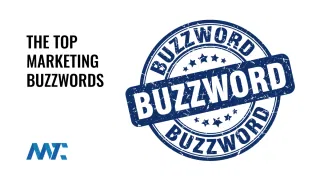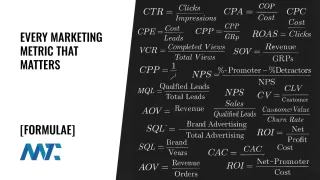7 Ways to Guarantee a Customer Centric Website

I was recently reviewing some corporate CPG / FMCG websites, and what a shock I got! These organisations have the consumer in their actual name, so they should be the most consumer-centric, right? Well, yes, of course!
Yet few of them appear to consider the consumer’s perspective when creating their websites. Even fewer are sufficiently delighted to make me want to return to their website, at least anytime soon!
From my review of several sites, I see that most organisations build websites to share material with their customers. However, it is the information they want to share, not what their customers might like to have.
This made me think about what would be essential to include on a website from a customer’s perspective. Here is my list of seven things, but I welcome your ideas or additions.
The 7 Things that MUST be on a Website
Every website — whether for a brand, product, service, or corporate identity — needs to deliver clarity, usability, and value. These seven essential elements are non-negotiable if you want your site to meet customer expectations and support your business goals.
- Clear and intuitive structure: Your website should be easy to navigate for first-time visitors. Organize content logically with clear menus, headings, and calls to action. Even with good navigation design, it’s still best practice to include a sitemap for users who prefer a directory-style overview or those who struggle to find specific pages.
- Visible contact information: Many users visit a site primarily to find contact details. Make it effortless for them by prominently placing phone numbers, email addresses, physical addresses, and social media links—ideally on the homepage and in the footer across all pages. Consider including a dedicated contact page for quick access as well.
- Comprehensive product, brand, or service listings: Highlight your brands or offerings prominently. Include images, key details such as ingredients or specifications, and clear guidance on product use, especially if there are limitations or usage notes. If availability is limited by geography or retailer, provide information on where to find or purchase your products.
- Detailed About Us section: Customers increasingly care about the company behind the products. Include a narrative about your company’s history, leadership team (beyond just board members), values, and mission. For global brands, mention geographic reach and offer multilingual options. Also include a news or media section for journalists and customers who want to stay informed about brand updates.
- Customer-focused content: Regularly updated content gives visitors a reason to return and helps with search engine visibility. Prioritize content that delivers value from the customer’s perspective — guides, tips, videos, or user-generated content. Visual content is essential; photos and videos drive engagement. Encourage customers to share their content or interact with yours, creating a more dynamic and community-driven site.
- Frequently Asked Questions (FAQ) section: This area is convenient for addressing common customer concerns and reducing friction in the support process. Please keep it updated with questions that come into your customer service channels. A good FAQ page shows you understand and proactively address your audience’s pain points.
- Helpful utilities and tools: Incorporate site features that improve usability and customer engagement, such as a search function, newsletter sign-up forms, and RSS feeds. Behind the scenes, use analytics and tracking tools to understand visitor behavior. This data will inform ongoing improvements, often revealing insights that customer surveys might miss.
A well-structured website is more than just a digital brochure — it’s a service platform, an information hub, and a trust-building tool. These seven elements create a seamless, customer-friendly experience that drives engagement and loyalty.
Liquid Death: Customer-Centric Website
Note: Douglas Karr has updated this article with this new example of a customer-centric website, Liquid Death.

- Clear and Intuitive Structure: The website features a clean, logical layout with a bold, video-centric homepage and a prominent navigation bar offering options like Shop, About, and Find It. Content is organized into digestible sections with clear calls to action, such as Shop Now, ensuring first-time visitors can navigate effortlessly. A search icon in the header further simplifies access, even without a visible sitemap.
- Visible Contact Information: Contact details are easily accessible in the footer, including an email and links to active social media profiles (Instagram, Twitter, TikTok). A Contact Us page with a straightforward form ensures users can reach out quickly, meeting the need for prominent communication options despite lacking a phone number or physical address.
- Comprehensive Product, Brand, or Service Listings: The Shop section details sparkling and still water varieties with high-quality images, flavor descriptions (e.g., Mango Chainsaw), nutritional info, and purchase options for packs or subscriptions. A Find It tool addresses geographic availability by locating retailers, making it easy for customers to access products.
- Detailed About Us Section: The About page tells a compelling story of their mission to bring death to plastic bottles, with a timeline since 2019, quirky team bios, and a focus on sustainability. A Press subsection informs customers about brand updates, reinforcing values and global reach through shipping details, even if not multilingual.
- Customer-Focused Content: Engaging content like the Death to Plastic blog, viral marketing videos on the homepage, and a Merch section with branded apparel keeps visitors hooked. Social media integration encourages users to share photos and videos, fostering a community-driven experience that aligns with customer interests and drives repeat visits.
- Frequently Asked Questions (FAQ) Section: The FAQ page, linked in the footer, addresses common concerns like water sourcing, safety certifications, and shipping policies. Regularly updated to reflect customer service trends, it proactively reduces friction and enhances the buying experience.
- Helpful Utilities and Tools: A header search bar, newsletter sign-up with a playful incentive, and a geolocation-based Find It tool enhance usability. The seamless checkout process and tailored subscription options suggest robust analytics, optimizing the customer experience, and making the site a practical, engaging platform.







